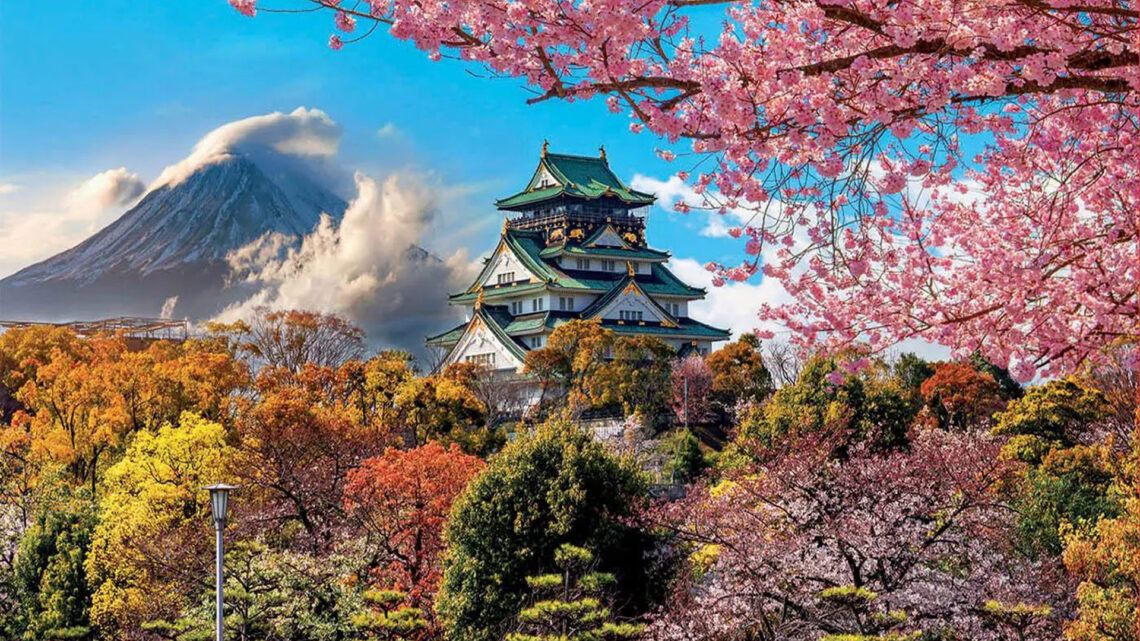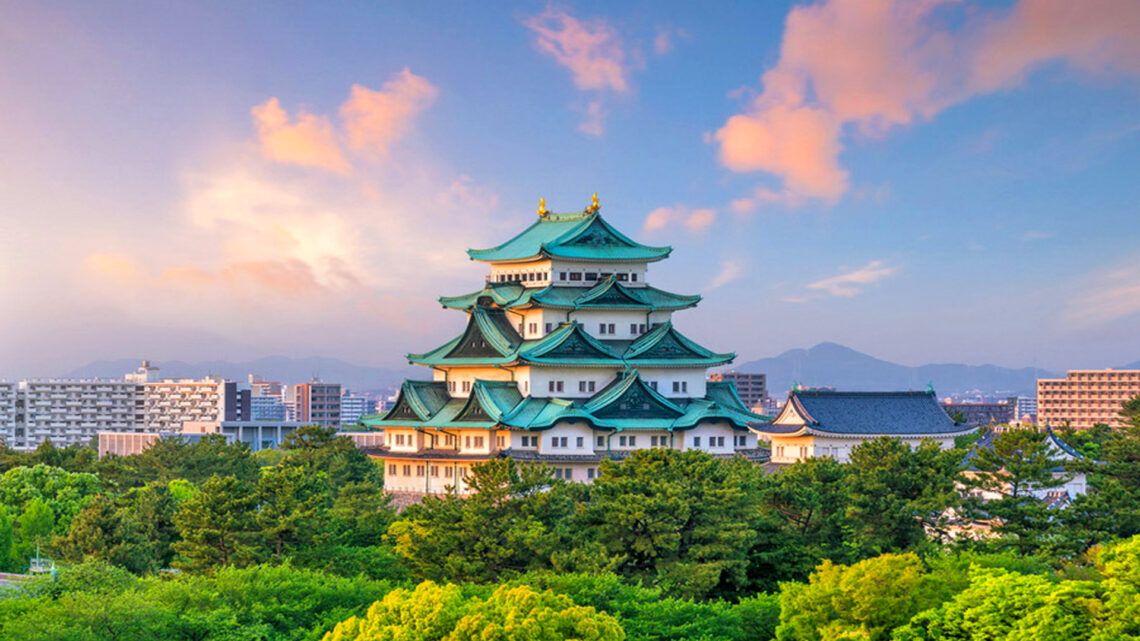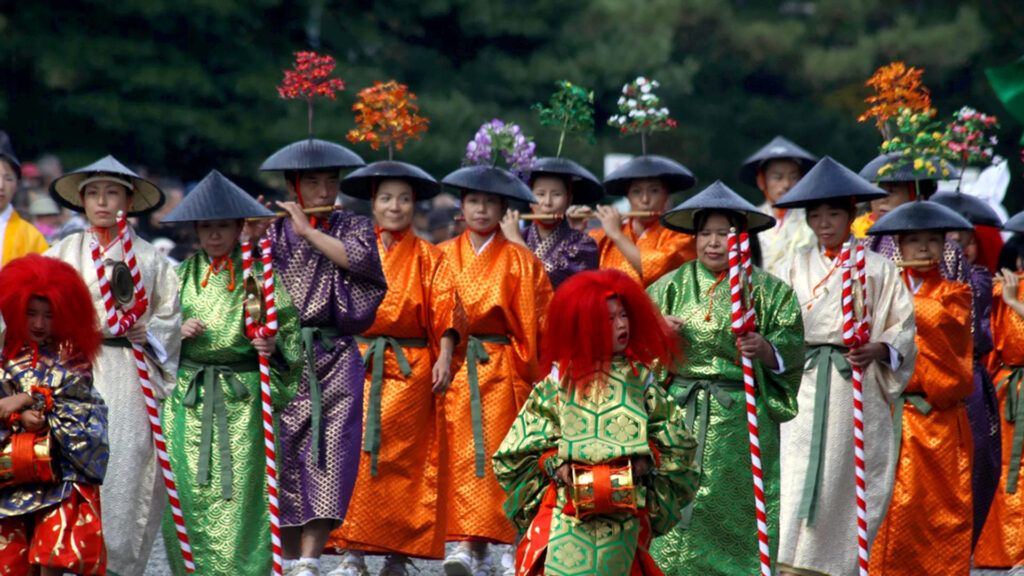
The Jidai Matsuri, which translates to the “Festival of the Ages,” is one of the most famous festivals in Kyoto, Japan. It takes place annually on October 22nd and celebrates Japan’s history and culture across various eras. The festival was initiated in 1895 to commemorate Kyoto’s 1100-year history as Japan’s capital. Since then, it has grown into one of the largest and most impressive historical parades in the world.
The origins of the Jidai Matsuri date back to the late 19th century. For over a thousand years, Kyoto was Japan’s political and cultural center until the capital moved to Tokyo in 1868. The Jidai Matsuri was established in 1895 to mark Kyoto’s 1100th anniversary as the capital, coinciding with the opening of the Heian Shrine, dedicated to the first and last emperors who ruled in Kyoto.
From its inception, the festival aimed to celebrate Kyoto’s rich history and culture. It was designed to preserve the city’s heritage and offer residents and visitors a chance to experience and appreciate the past. The parade showcases Japan’s development from the Heian Period (794-1185) to the Meiji Period (1868-1912) through elaborately designed costumes and depictions of historical events.
Preparations for the Jidai Matsuri begin months in advance. One of the biggest challenges is sourcing and creating authentic costumes and props for the parade participants. The costumes are meticulously crafted based on historical models, with great attention to detail to accurately represent different epochs. Many of the costumes and props are made by artisans and artists in Kyoto using traditional techniques to ensure authenticity. Crafting a single costume can take several months and requires extensive knowledge of historical fashion and materials.
The highlight of the Jidai Matsuri is the parade, which starts at Kyoto’s Imperial Palace and proceeds to the Heian Shrine. The parade stretches about two kilometers and includes over 2,000 participants dressed in historical costumes representing various periods of Japanese history.
Heian Period (794-1185)
The Heian Period is the first era depicted in the parade. Known for its flourishing culture and arts, particularly in literature, painting, and architecture, participants wear splendid court attire reflecting the elegance and sophistication of the imperial court. Highlights of this era include portrayals of nobles, court ladies, and warriors in intricately embroidered garments.
Kamakura Period (1185-1333)
The Kamakura Period is noted for the rise of the samurai class and the establishment of the first shogunate. Parade participants wear armor and weapons representing the warrior culture of this era. The samurai costumes are detailed and impressive, with helmets, swords, and armor symbolizing the strength and bravery of the warriors.
Muromachi Period (1336-1573)
During the Muromachi Period, art and culture continued to thrive, particularly the tea ceremony and Zen gardens. Participants wear costumes reflecting the fashion of the time, including kimonos and other traditional clothing. The parade also features monks and artists, highlighting the spiritual and artistic blossoming of this era.
Azuchi-Momoyama Period (1573-1603)
This period is known for the construction of magnificent castles and the unification of Japan under the rule of Oda Nobunaga and Toyotomi Hideyoshi. The costumes from this era are particularly elaborate, with intricate patterns and colors. Participants portray warriors, daimyo (feudal lords), and famous historical figures responsible for Japan’s political and military consolidation.
Edo Period (1603-1868)
The Edo Period was a time of peace and stability under the Tokugawa Shogunate. The parade showcases various aspects of daily life during this era, including depictions of merchants, artisans, and geishas. The costumes are diverse and colorful, reflecting the variety and richness of Edo society.
Meiji Period (1868-1912)
The Meiji Period marks Japan’s transition from a feudal society to a modern nation. Participants wear costumes demonstrating the Western influence and modernization of Japan during this time. This era is characterized by the introduction of Western clothing and technologies and the adaptation of traditional Japanese elements to the modern world.
The Significance of the Jidai Matsuri
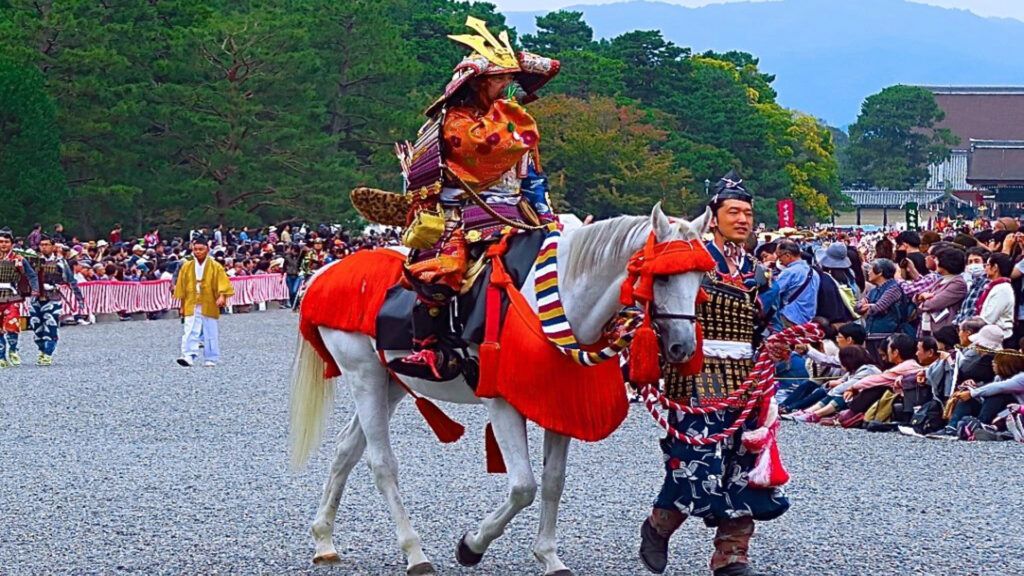
The Jidai Matsuri is not just a festival celebrating the past but also a celebration of the cultural identity and heritage of Kyoto. It offers residents and visitors the opportunity to experience Japan’s rich history and traditions up close. The festival strengthens the sense of community and raises awareness of the importance of preserving and maintaining cultural values.
Moreover, the Jidai Matsuri is also a significant economic factor for Kyoto. It attracts thousands of tourists each year who visit the city to see the parade and explore the historical sites and cultural attractions. The festival promotes tourism and boosts the local economy.
Attending the Jidai Matsuri is an unforgettable experience. The atmosphere is electrifying as the city comes to life, bringing the past into the present. The streets are lined with spectators eagerly waiting for the parade to begin. The anticipation and excitement are palpable as participants line up and the first drumbeats signal the start of the procession.
A particular highlight is the variety of costumes and representations. Each section of the parade tells its own story, providing a unique glimpse into a specific era of Japanese history. The attention to detail and authenticity of the costumes are impressive, and it is evident that a lot of care and effort has gone into preparing for the festival.
For those planning to visit the Jidai Matsuri, it is advisable to arrive early to secure a good spot along the parade route. The best places are near the Imperial Palace and the Heian-jingu Shrine, where the parade begins and ends. It is also wise to check the route and schedule of the parade in advance to avoid missing any important highlights.
Comfortable clothing and shoes are essential, as you will spend a lot of time outdoors. A hat and sunscreen are recommended since the sun can still be quite strong in Kyoto in October. Bringing water and snacks is also a good idea, as it can sometimes be challenging to find refreshments along the route.
Travel and Accommodation for the Jidai Matsuri
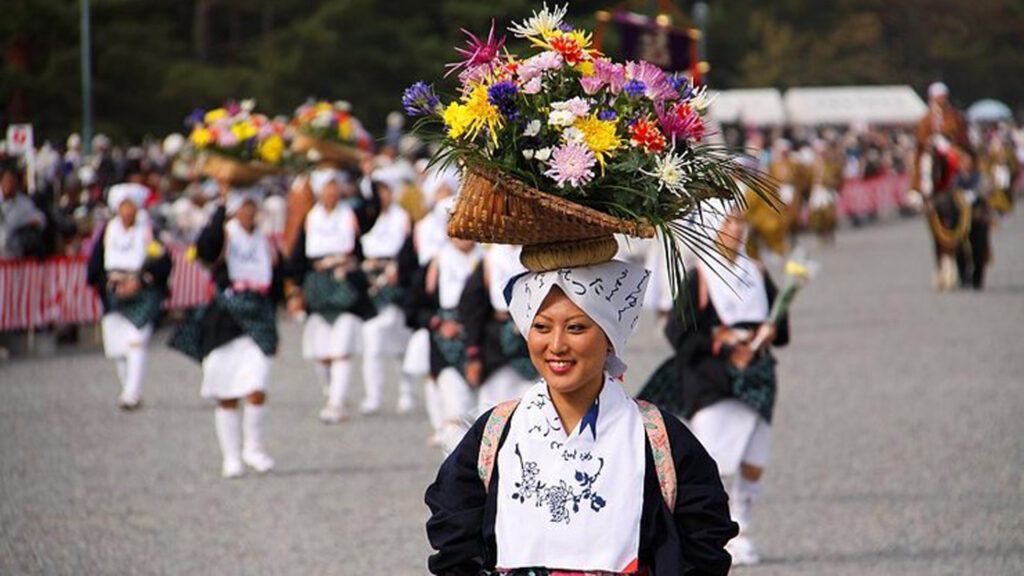
Traveling to Kyoto is straightforward, with various options available depending on your starting point.
By Airplane
The nearest international airports are Kansai International Airport (KIX) in Osaka and Osaka Itami Airport (ITM). From these airports, you can take a train or bus directly to Kyoto. The Haruka Express train connects Kansai International Airport directly to Kyoto Station in about 75 minutes. Alternatively, you can take a shuttle bus that regularly runs between the airports and Kyoto.
By Shinkansen (High-Speed Train)
Kyoto is a major hub in Japan’s Shinkansen network. From Tokyo, you can reach Kyoto in about 2 hours and 20 minutes on the Nozomi Shinkansen. The journey from Osaka takes only about 15 minutes. Kyoto is also easily accessible by Shinkansen from other major cities like Nagoya and Hiroshima.
By Bus
For budget-conscious travelers, there are numerous long-distance buses connecting Kyoto with other cities in Japan. These buses are often cheaper than the Shinkansen and offer a comfortable way to get to Kyoto, although travel times are longer.
By Car
If you prefer to travel by car, you can reach Kyoto via Japan’s well-developed highways. However, it is important to note that parking in Kyoto is limited and often expensive. Additionally, traffic in the city can be particularly heavy during the Jidai Matsuri.
Accommodations in Kyoto
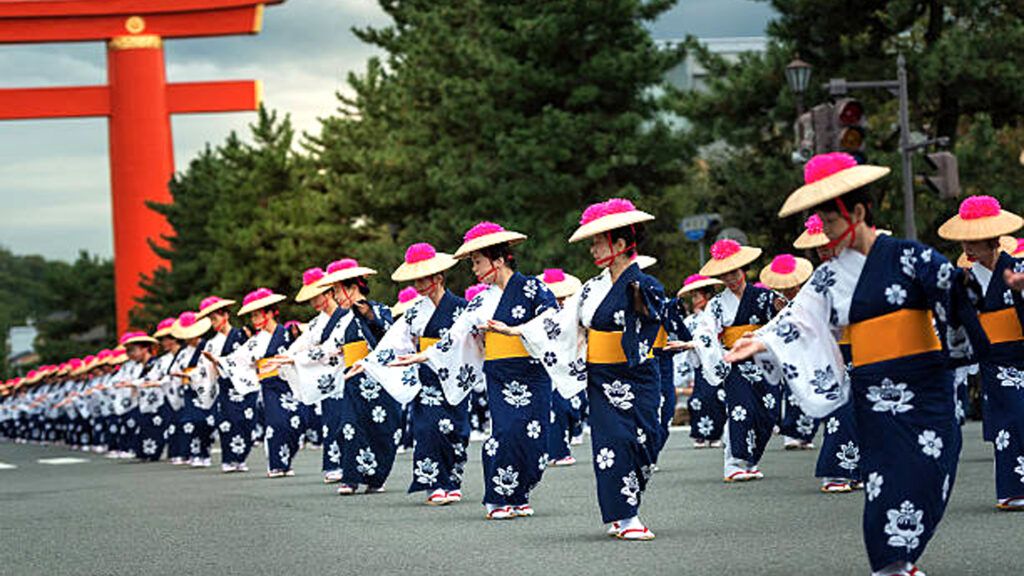
Kyoto offers a variety of accommodation options to suit every taste and budget. Here are some of the best choices:
Luxury Hotels
For those looking to indulge in something special, Kyoto has several luxury hotels that offer top-notch service and amenities.
The Ritz-Carlton Kyoto: Located on the banks of the Kamogawa River, this hotel offers luxurious rooms with stunning views, first-class restaurants, and a spa.
Hyatt Regency Kyoto: Situated near the Sanjusangendo Temple, this hotel features elegant rooms, a fitness center, and multiple restaurants.
Hotel Okura Kyoto: Combining traditional Japanese hospitality with modern amenities, this centrally located hotel is close to many major attractions.
Mid-Range Hotels
Travelers seeking comfort and convenience at a reasonable price will find many excellent mid-range hotels in Kyoto.
Hotel Granvia Kyoto: Located directly in Kyoto Station, this hotel offers comfortable rooms and a variety of restaurants.
Kyoto Century Hotel: Also near the main station, this hotel provides stylish rooms and friendly service.
Citadines Karasuma-Gojo Kyoto: An aparthotel that offers spacious rooms with kitchenettes, ideal for longer stays.
Traditional Ryokan
For an authentic Japanese experience, consider staying in a ryokan, a traditional Japanese inn.
Gion Hatanaka: Located near the famous Gion district, this ryokan offers traditional rooms with tatami mats and futons, as well as kaiseki meals (multi-course traditional Japanese cuisine).
Yoshida-sanso: A luxurious ryokan in a former imperial residence, offering an elegant blend of traditional and modern design.
Seikoro Ryokan: A historic ryokan with a charming garden and onsen baths, providing a peaceful and authentic Japanese atmosphere.
Budget Accommodations and Hostels
Budget-conscious travelers can find numerous hostels and budget hotels offering affordable accommodations.
Khaosan Kyoto Guesthouse: A popular hostel with dormitories and private rooms, providing a friendly and international atmosphere.
Piece Hostel Kyoto: Located near the main station, this modern hostel offers comfortable dormitories and private rooms, as well as a complimentary breakfast.
Capsule Ryokan Kyoto: A blend of traditional ryokan and modern capsule hotel, offering affordable yet comfortable accommodations.
Booking in Advance: Since the Jidai Matsuri is a popular event, it is advisable to book accommodations as early as possible to secure the best options and prices.
Central Location: It is practical to choose accommodation near the city center or Kyoto Station to facilitate access to attractions and the parade.
Transport Connections: Check the proximity of your accommodation to public transport to make getting around the city easier.
Getting to Kyoto and choosing the right accommodation are crucial for a successful experience at the Jidai Matsuri. With a variety of transport options and accommodations suitable for every budget and taste, you can look forward to an unforgettable stay in Kyoto. Plan ahead and enjoy the impressive Jidai Matsuri and the many cultural treasures Kyoto has to offer.
My Conclusion
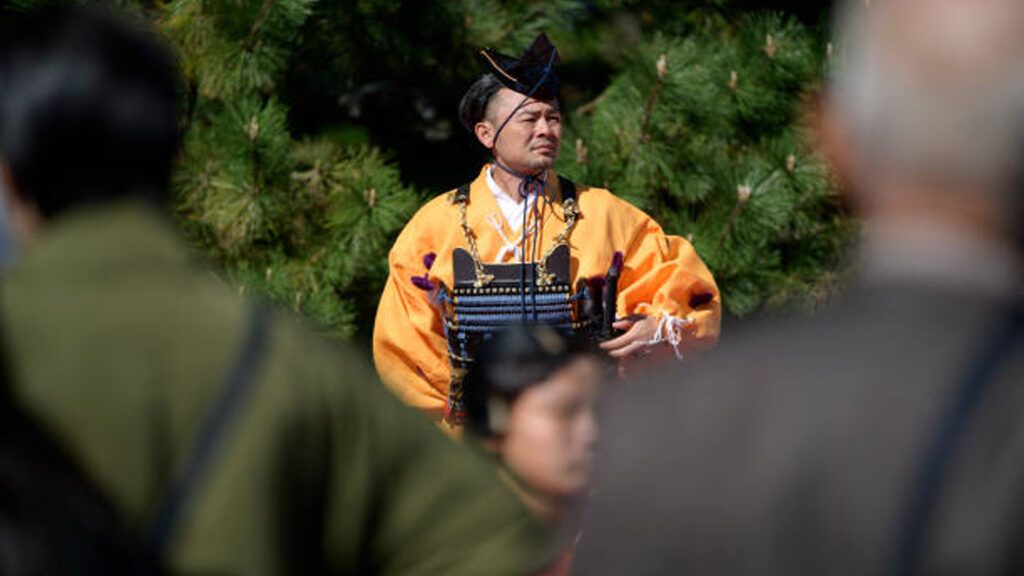
The Jidai Matsuri in Kyoto is undoubtedly one of the most impressive and unique festivals I have ever experienced. It offers a rare opportunity to immerse oneself in Japan’s rich and diverse history and witness the evolution of the country through various eras.
What makes the Jidai Matsuri so special is the incredible attention to detail and authenticity in the portrayals. The elaborately designed costumes, precise props, and carefully staged historical scenes provide a fascinating insight into different periods of Japanese history. Each section of the parade is a living history book, taking spectators on a journey through time—from the elegant Heian period to the warlike Kamakura period and into the modern Meiji era.
Another remarkable aspect of the Jidai Matsuri is the strong sense of community and pride that the residents of Kyoto show in their cultural heritage. The involvement of the local community, the months of preparation, and the dedication with which the festival is organized are impressive. It is evident that the Jidai Matsuri is not just a tourist event but a deeply rooted cultural occasion passionately and carefully maintained by the locals.
For me personally, the Jidai Matsuri was an emotional and inspiring experience. The beauty and elegance of the historical costumes, the soundscape of traditional music, and the vivid representations of history deeply impressed me. It was a feast for the senses that made me appreciate and respect Japanese culture and history even more.
A particularly moving moment for me was when the parade ended at the Heian-jingu Shrine. The symbolic return of history to a place of great historical significance was a powerful conclusion to the festival. It felt as if the past and present merged for a moment, highlighting the timeless beauty and wisdom of Japanese culture.
From a practical standpoint, the Jidai Matsuri also excelled. The organization was excellent, and despite the crowds, everything went smoothly. The helpfulness of the locals and the well-marked information made it easy to navigate and get the most out of the experience.
The Jidai Matsuri is far more than just a historical parade. It is a celebration of cultural identity and a living expression of Kyoto’s rich heritage. For anyone interested in history, culture, and traditions, this festival is a must-see. It offers a unique opportunity to delve into the past, experience the beauty and diversity of Japanese culture, and feel the deep connection of people to their heritage.
My visit to the Jidai Matsuri was an unforgettable experience that left a lasting impression and inspired me greatly. I highly recommend it to everyone to experience this fascinating festival for themselves. It is a journey through time that touches the heart and soul and leaves an indelible impression.
The Jidai Matsuri in Kyoto is a unique and fascinating festival that brings to life Japan’s rich history and culture in an impressive way. It offers a rare opportunity to experience different epochs of Japanese history up close and appreciate the cultural diversity and heritage of Kyoto. A visit to the Jidai Matsuri is an unforgettable experience that delights both locals and tourists alike.


